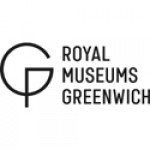How you can use this image
This image can be used for non-commercial research or private study purposes, and other UK exceptions to copyright permitted to users based in the United Kingdom under the Copyright, Designs and Patents Act 1988, as amended and revised. Any other type of use will need to be cleared with the rights holder(s).
Review the copyright credit lines that are located underneath the image, as these indicate who manages the copyright (©) within the artwork, and the photographic rights within the image.
The collection that owns the artwork may have more information on their own website about permitted uses and image licensing options.
Review our guidance pages which explain how you can reuse images, how to credit an image and how to find images in the public domain or with a Creative Commons licence available.
Notes
Add or edit a note on this artwork that only you can see. You can find notes again by going to the ‘Notes’ section of your account.
One of a pair with "'Erebus' and 'Terror' in New Zealand, August 1841" (BHC1214). The two ships represent the only human presence in an environment of rough peaks, glaciers, mountains and jagged rocks. They are portrayed tossed in the waves as they navigate a passage though a sound. The ship to the right is signalling with flags to the other. In the foreground is Carmichael's interpretation of the wildlife to be found in the Antarctic. A whale sends up a jet of water in the foreground to the left. Carmichael was a prolific artist who produced drawings and engravings for the British newspapers of the time. However, as he did not accompany Ross the painting is not an eyewitness account. It may be a response to the publication of Ross's book about the expedition but the composition is based on a drawing which Carmichael appears to have done earlier, representing one of Captain William Edward Parry's two-ship expeditions in search of the North-West Passage in the 1820s.
Carmichael presumably did not develop the drawing into an Arctic painting but instead used it for this Antarctic subject. The landscape seems fantastical and the scene has been romanticised, since although the environment is barren it is not threatening to the ships and men, and a golden glow appears over the mountain in the distance to the left. The presence of the birds and fish implies that nature has been interpreted as benign to man and not hostile. The painting has been signed and dated by the artist.
Title
'Erebus' and 'Terror' in the Antarctic
Date
1847
Medium
oil on canvas
Measurements
H 122.7 x W 184.2 cm
Accession number
BHC1215
Work type
Painting








